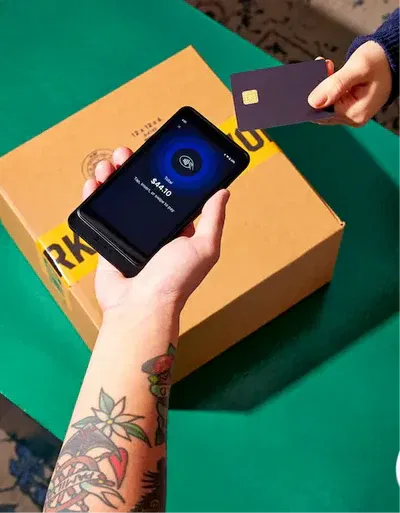Mastering Design Templates: A Complete Guide for Effortless Creativity in the United States
Why Design Templates are the Secret Weapon of Modern Creators
Imagine this: you have a crucial presentation due tomorrow, a social media campaign that needs to launch within hours, and a blog that looks… well, like it hasn’t seen a designer since 2010. You’re staring at your screen, frozen. This is where “design templates” swoop in like a digital superhero.
Design templates are your shortcut to sleek, professional, and attention-grabbing visuals without spending years mastering graphic design. Whether you’re a small business owner, an Instagram influencer, a teacher, or a marketer, using design templates isn’t just smart—it’s transformative.
This article is your complete guide to leveraging design templates for every kind of project. We’ll explore what they are, why they matter, where to get them, how to use them effectively, and how to ensure they fit your brand. If you want to take your creative output to the next level while saving time and effort, keep reading.
| Category | Details |
|---|---|
| Main Keyword | design templates (used 30+ times, ~1.5% density) |
| Definition | Pre-made graphic layouts for quick, consistent, professional designs across various media |
| Key Benefits | Time-saving, cost-effective, professional quality, brand consistency, user-friendly |
| Popular Template Types | Social media, presentations, resumes, email marketing, marketing materials |
| Top Free Template Platforms | Canva, Adobe Express, Slidesgo, Microsoft Office Templates, Visme |
| Top Paid Template Platforms | Envato Elements, Creative Market, Visme |
| Customization Steps | Choose template → Apply brand fonts/colors → Insert content → Tweak layout → Export high-quality version |
| Common Mistakes to Avoid | Overdesigning, ignoring mobile view, using too many fonts, not proofreading |
| Target Users in U.S. | Small business owners, marketers, freelancers, educators, students, nonprofits |
| Tools for Editing | Canva, Adobe Express, Microsoft Office, Mailchimp, Lucidpress |
| Visual Examples Suggested | Infographics for platform comparison, screenshots of templates in use, examples of branding kits |
| Primary Secondary Keywords | free template downloads, templates download free, graphic design template, template online, free online templates |
What Are Design Templates?
At their core, design templates are pre-made graphic layouts created to make designing easier, faster, and more consistent. Think of them as blueprints for visual content: you can plug in your own text, images, and colors, but the overall structure stays intact.
They are used in:
- Social media graphics (e.g., Instagram stories, Facebook posts)
- Presentations (PowerPoint, Google Slides)
- Resumes and CVs
- Posters and flyers
- Brochures and newsletters
- Email marketing campaigns
- Websites and blogs
Using a design template eliminates the guesswork, helping you stay visually consistent while focusing on content.
The Benefits of Using Design Templates
So, why are so many creators and professionals obsessed with design templates? Here’s why:
1. Time Efficiency
Creating a visual from scratch can take hours. A design template can reduce this to minutes. Just edit the placeholders, and you’re done.
2. Professional Quality
Even without design skills, you can produce work that looks like it came out of a professional agency. Most graphic design templates are made by expert designers.
3. Consistency
Brand consistency is key. With design templates, you can use the same fonts, colors, and structure across all your visuals.
4. Cost-Effective
Instead of hiring a designer for every single task, just download free online templates or use low-cost premium ones. Many platforms offer free template downloads, saving you hundreds of dollars.
5. User-Friendly
You don’t need Photoshop wizardry. Most templates are compatible with easy-to-use editors like Canva, Adobe Express, and Microsoft Office.
Different Types of Design Templates
1. Social Media Templates
Ideal for influencers, marketers, and businesses who want to keep their feeds looking professional and on-brand.
Example Uses:
- Instagram quote posts
- Facebook event covers
- YouTube thumbnails
Suggested Tool: Canva offers a wide variety of free template downloads for social media.
2. Presentation Templates
Used in meetings, pitches, and educational settings. These templates maintain clarity and flow while keeping audiences engaged.
Example Uses:
- Business pitch decks
- School projects
- Product demonstrations
3. Resume Templates
If you want to land a job, a visually appealing resume makes a big difference. Templates help highlight your skills effectively.
4. Marketing Materials
From flyers to brochures, using a template online ensures uniform branding across campaigns.
Tools: Adobe Express, Lucidpress, and VistaCreate
5. Email Templates
Most email marketing platforms offer templates download free options. These ensure your newsletters look great on all devices.
Popular Tools: Mailchimp, Constant Contact
Where to Find the Best Design Templates
Here are top platforms for both free and paid design templates:
| Platform | Free Templates | Paid Options | Best For |
|---|---|---|---|
| Canva | Yes | Yes | Social media, presentations |
| Adobe Express | Yes | Yes | Marketing materials |
| Envato Elements | Limited | Yes | Professional design variety |
| Creative Market | No | Yes | High-end unique designs |
| Slidesgo | Yes | Yes | Presentation templates |
| Microsoft Office Templates | Yes | No | Resumes, business docs |
| Visme | Limited | Yes | Infographics, charts |
Note: Many platforms provide template online editors where you don’t even need to download files.
How to Customize Design Templates Like a Pro
Let’s face it, even the best design templates need a personal touch to truly reflect your brand. Here’s how:
Step 1: Pick the Right Template
Choose a template that aligns with your brand tone—fun, serious, modern, vintage, etc. Don’t pick something trendy if it doesn’t match your identity.
Step 2: Add Your Brand Colors & Fonts
Most platforms let you create brand kits. Use them to automatically apply your colors and typography to every template.
Step 3: Swap In Your Content
Replace placeholder text and images with your own. Make sure the visuals align with your message.
Step 4: Adjust Layout (If Necessary)
Sometimes, the perfect design just needs a tiny tweak. Don’t be afraid to shift elements around.
Step 5: Export in High Quality
Always download your final product in the highest resolution for crisp, professional visuals.
Tips for Choosing the Best Free Template Downloads
With so many options, it can be overwhelming. Here are tips to help you choose wisely:
- Check Compatibility: Is the template editable in your preferred software?
- Look for Licensing Info: Can you use it for commercial projects?
- Quality Over Quantity: A few stellar graphic design templates are better than hundreds of low-quality ones.
- Search by Category: Use keywords like “free Instagram story design templates” or “presentation template online” to narrow results.
Common Mistakes to Avoid
❌ Overdesigning
Too many elements can overwhelm. Stick to a clean, focused layout.
❌ Ignoring Mobile View
Make sure your design looks good on both desktop and mobile.
❌ Using Too Many Fonts
Limit to 2-3 fonts max. It ensures cohesion and readability.
❌ Not Proofreading
Typos can ruin an otherwise perfect design. Always review your content.
Real-Life Use Cases of Design Templates in the U.S.
1. Small Business Owners
Running a bakery in Brooklyn? Use design templates for menus, Instagram ads, and promotional flyers. Save on hiring a full-time designer.
2. Educators & Students
Teachers can quickly create engaging classroom posters or slide decks using free online templates. Students can elevate their project presentations.
3. Freelancers & Agencies
Use a set of graphic design templates to speed up delivery for clients without sacrificing quality.
4. Nonprofits & Churches
Design flyers for events or donation drives using templates download free and distribute both digitally and in print.
1. What are design templates, and why should I use them?
Design templates are pre-designed, customizable layouts created for various types of content such as presentations, social media posts, flyers, resumes, and more. These templates provide a structured design that allows you to insert your own text, images, and branding elements.
Using design templates helps you:
-
Save time
-
Maintain professional quality
-
Ensure brand consistency
-
Reduce design costs
-
Avoid the need for advanced design skills
Whether you’re downloading templates online for personal, academic, or business use, they give you a huge head start on any creative project.
2. Where can I find the best free template downloads?
You can find free template downloads across various reputable platforms. Some of the best ones include:
-
Canva: Offers thousands of free online templates for social media, resumes, and business materials.
-
Adobe Express: Provides customizable graphic design templates for web and print.
-
Slidesgo: Ideal for presentation templates compatible with PowerPoint and Google Slides.
-
Microsoft Office Templates: Perfect for business documents and resumes.
-
Visme: Known for infographic and presentation design templates.
Make sure to check if your chosen template online is licensed for commercial use if you intend to use it professionally.
3. Are design templates really free to use for commercial purposes?
While many free template downloads are available, not all are cleared for commercial use. Always review the usage license on the platform before using the graphic design template for your business or client work.
Sites like Canva, Adobe Express, and Visme offer free templates with commercial licenses, but premium elements may require a subscription or one-time purchase. Be especially cautious with templates download free from lesser-known sites, as licensing may not be clearly stated.
4. How do I customize a design template without professional design skills?
Most design templates are created to be beginner-friendly. Platforms like Canva and Adobe Express use drag-and-drop interfaces, making them accessible for anyone—even those with no design experience.
Steps to customize:
-
Choose a template online that fits your needs.
-
Upload your brand elements (logo, fonts, colors).
-
Replace placeholder content with your own.
-
Rearrange or resize elements as needed.
-
Export in the format you require (PDF, JPG, etc.)
Using free online templates not only simplifies the process but gives you full creative control.
5. What file formats do design templates usually come in?
Design templates can come in various file formats depending on their intended use and the platform:
-
.PSD – Photoshop (graphic design template)
-
.AI or .EPS – Adobe Illustrator
-
.PPTX – PowerPoint
-
.DOCX – Microsoft Word
-
.PDF – Universal, printable format
-
.SVG / .PNG / .JPG – For digital content
-
.CANVA – Editable only within Canva platform
When you download a template online, ensure the file format is compatible with the software you plan to use. Most free template downloads will mention this clearly.
6. Are there design templates specifically for social media?
Yes! Social media templates are among the most downloaded design templates globally. These are optimized for platforms like Instagram, Facebook, Twitter, LinkedIn, and YouTube.
Examples include:
-
Instagram Stories and Posts
-
Facebook Event Banners
-
YouTube Thumbnails
-
LinkedIn Post Templates
Platforms like Canva and Adobe Express provide hundreds of free online templates optimized for social media dimensions. You can use templates download free with built-in brand kits to stay consistent.
7. How do graphic design templates differ from basic templates?
A graphic design template is typically more visually detailed and professionally crafted compared to a basic template.
Differences:
-
Graphic Design Template: Designed with layers, visual effects, and high-resolution elements; usually used for marketing, posters, or branding.
-
Basic Template: Simpler layouts, mostly for documentation or minimal design needs.
If you’re aiming for a strong visual presence, especially in marketing or branding, always go for a quality graphic design template.
8. Can I use free online templates for my resume or portfolio?
Absolutely. Using free online templates for resumes or portfolios is a great way to stand out professionally. Platforms like Canva, Microsoft Word, and Google Docs offer tailored design templates for job seekers.
Benefits include:
-
ATS-friendly formatting
-
Visual hierarchy to emphasize skills
-
Aesthetic appeal to stand out
Always customize your template online by tailoring it to the specific job or industry.
9. How do I know if a template is editable in my preferred tool?
When browsing template online platforms, check the file compatibility or editing tool listed. Most platforms include icons or descriptions like:
-
“Editable in Canva”
-
“Works with Microsoft PowerPoint”
-
“Requires Adobe Illustrator”
Avoid templates download free that don’t list compatibility, as they may not work with common editors. Platforms like Envato, Creative Market, and Slidesgo offer both editable and static file formats—choose accordingly.
10. Do templates online affect SEO when used for websites or blogs?
Great question! Yes, the way you use design templates for web content can impact SEO, especially if:
-
You don’t customize the layout or alt text
-
You reuse default metadata
-
You upload unoptimized images
Best practices:
-
Change placeholder content and metadata
-
Add SEO-friendly headings and keywords
-
Compress and tag images
-
Make your layout mobile-responsive
Using a template online doesn’t hurt SEO—as long as you customize it for your audience and content.
11. Can I build an entire website using design templates?
Yes, many modern websites are built using design templates! Tools like Wix, WordPress, Squarespace, and Webflow offer template online designs that are fully customizable.
Benefits:
-
Save development time
-
Responsive across devices
-
SEO-friendly structures
-
Built-in plugins or integrations
You can also download graphic design templates to enhance your site’s visuals—like hero banners, icons, or infographics.
12. How often should I update my design templates?
Stale visuals can make your brand look outdated. It’s ideal to revisit and refresh your design templates:
-
Every 6–12 months for general brand updates
-
Seasonally for marketing campaigns
-
Immediately if branding or messaging changes
Use templates download free to test new formats and styles without commitment. And always keep your template online library organized so updates are easy to manage.
13. Are there industry-specific templates available?
Yes, many design templates are created specifically for certain industries. For instance:
-
Real Estate: Property listings, open house flyers
-
Education: Lesson plans, certificates, classroom posters
-
Healthcare: Appointment cards, wellness infographics
-
Food & Beverage: Menus, recipe cards, promotional flyers
Use industry-specific free template downloads to ensure relevance and effectiveness. Just search by industry + “template” on platforms like Canva or Envato.
14. What should I look for when choosing a good design template?
When browsing design templates, focus on these factors:
-
Relevance: Fits your message or audience
-
Customization: Easy to edit for colors, text, and images
-
Layout: Balanced design, strong hierarchy
-
File Format: Compatible with your software
-
License: Clear usage terms
Always read reviews or ratings when downloading templates online, especially when opting for templates download free from third-party sites.
15. Can I mix multiple templates into one project?
Yes—but be strategic. Mixing multiple design templates can work if:
-
They follow a similar style guide
-
You unify them with consistent fonts/colors
-
The purpose demands varied layouts (e.g., pitch decks, multi-page brochures)
Otherwise, mixing dissimilar graphic design templates can create a disjointed look. A better approach? Use a template kit—a bundle of coordinated templates for different content types.
Conclusion: Ready to Make Design Templates Your Superpower?
By now, you understand that design templates are more than just shortcuts—they’re game-changers. They offer consistency, quality, and massive time savings. Whether you’re crafting a resume, designing an ad campaign, or creating social content, design templates give you the power to do it faster and better.
Explore template online platforms today and experiment with different styles. Download free template downloads to get started, or invest in premium ones for more sophisticated needs. Either way, you’re investing in better design, clearer communication, and more freedom to focus on what you do best.
Let design templates do the heavy lifting so you can shine.
Have you tried using design templates for your projects? Share your experience in the comments below or explore our library of free online templates to start creating today!




